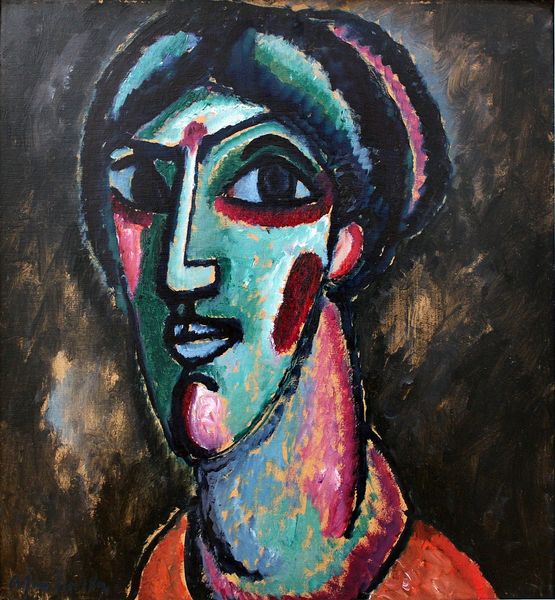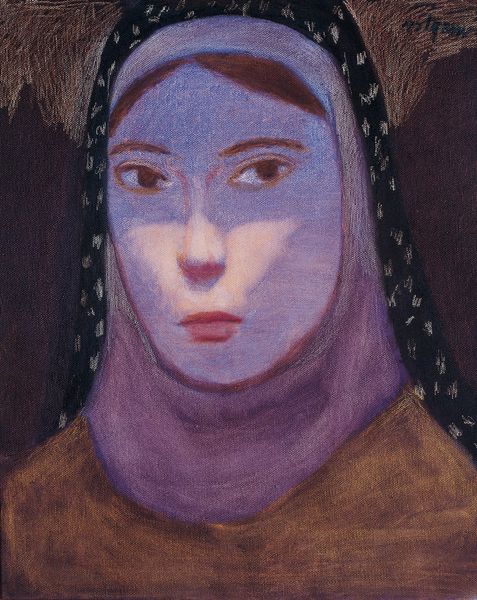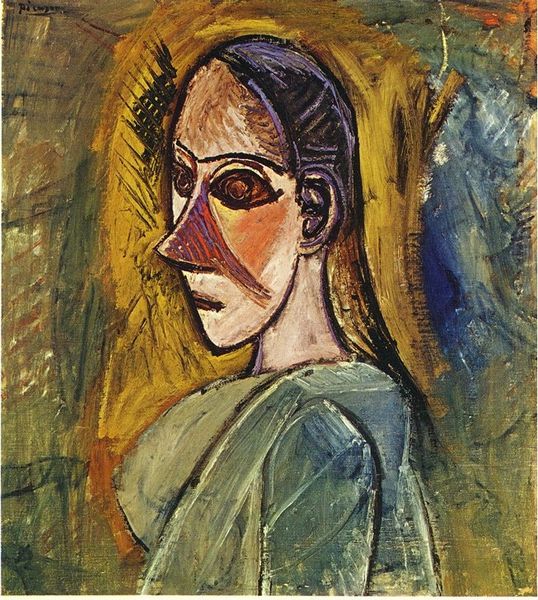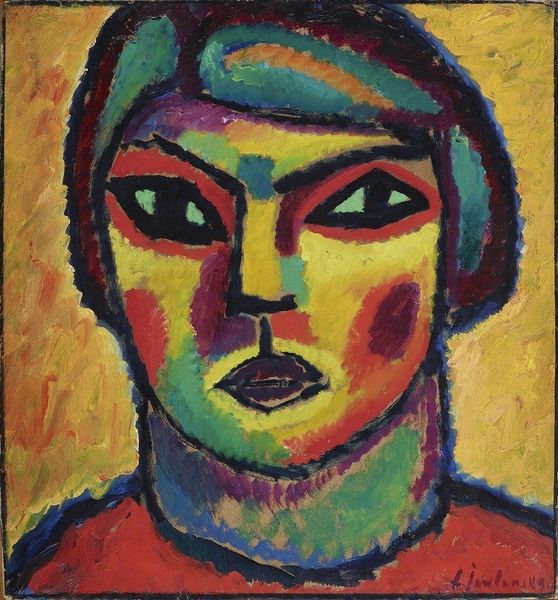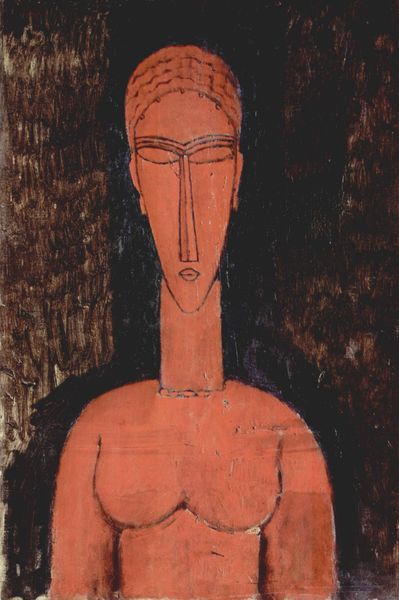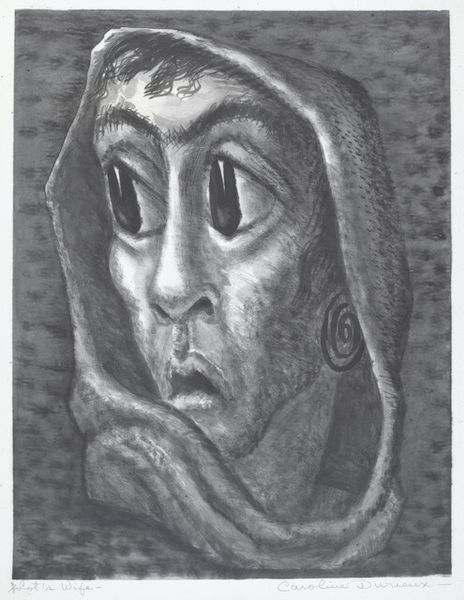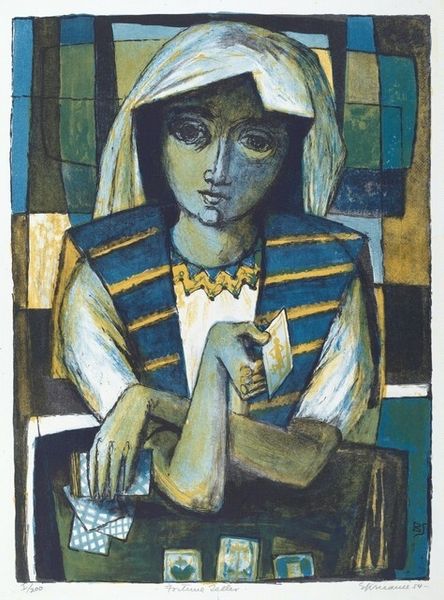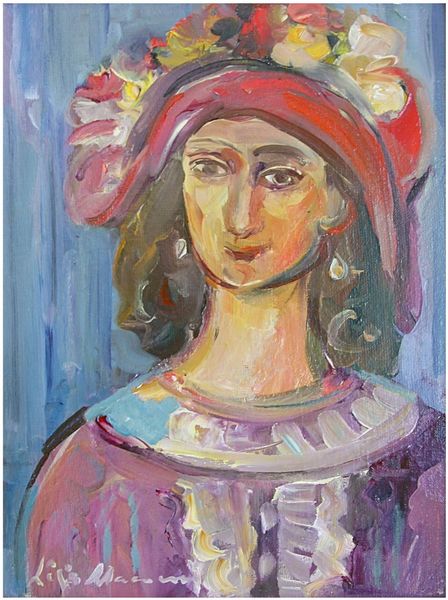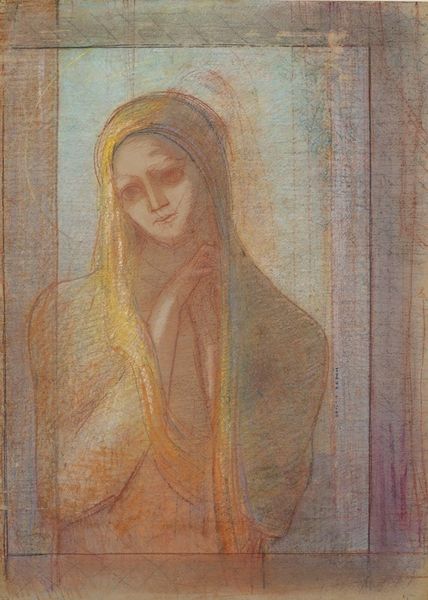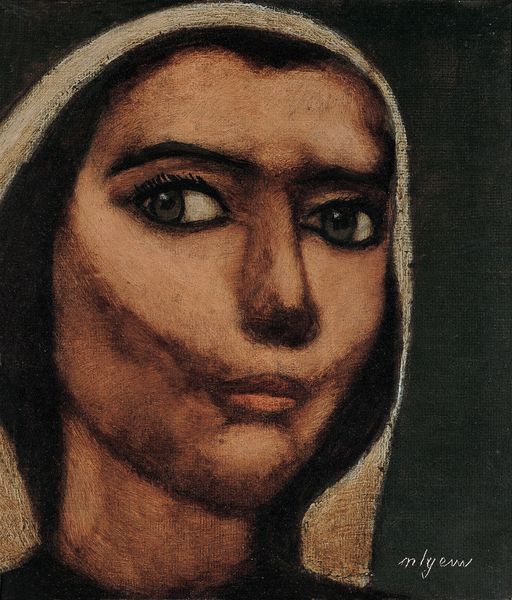![Malach [verso] by Jerome Kaplan](/_next/image?url=https%3A%2F%2Fd2w8kbdekdi1gv.cloudfront.net%2FeyJidWNrZXQiOiAiYXJ0ZXJhLWltYWdlcy1idWNrZXQiLCAia2V5IjogImFydHdvcmtzL2E1Nzk1NWZhLTlkMzItNGM4Ny04Y2YyLTgyMGMxNzliZTAwMy9hNTc5NTVmYS05ZDMyLTRjODctOGNmMi04MjBjMTc5YmUwMDNfZnVsbC5qcGciLCAiZWRpdHMiOiB7InJlc2l6ZSI6IHsid2lkdGgiOiAxOTIwLCAiaGVpZ2h0IjogMTkyMCwgImZpdCI6ICJpbnNpZGUifX19&w=1920&q=75)
Dimensions: image: 37.15 × 48.1 cm (14 5/8 × 18 15/16 in.) sheet: 41.28 × 58.26 cm (16 1/4 × 22 15/16 in.)
Copyright: National Gallery of Art: CC0 1.0
Curator: This is "Malach [verso]," a 1951 print by Jerome Kaplan. What do you make of it? Editor: Stark, immediately. The simplified planes of color and the forward gaze are compelling and confrontational. There’s a definite emotional intensity at play. Curator: Indeed. Considering Kaplan's expressionist leaning, one sees this emotional intensity echoed throughout the composition. Note the bold lines and how they create a sense of angularity and unrest, even within the subject's face. The textures are intriguing as well. Editor: Agreed, I wonder how the post-war climate impacted artists, especially those from immigrant families? Were there institutions and initiatives that allowed artists like Kaplan to engage with broader audiences? Did it impact style choices, subject matter? The subject is quite striking, one cannot ignore that intense stare. What does it tell us? Curator: Well, considering the title includes the term “Malach,” the Hebrew term for angel or messenger, perhaps the artist attempts to evoke a figure possessing transcendent knowledge, though rendered in the earthy tones and coarse textures of our shared human condition. Notice how Kaplan used varying textures within a single print—it creates depth and visual interest but could this symbolize conflict? Or the multifaceted nature of human experience? Editor: Yes, it seems that he intended to capture the dichotomy between our inner aspirations for something greater and the limitations of earthly reality. Did his heritage and experience shape the piece? Or the Jewish intellectual community of that time? Or is that merely a label ascribed to an abstract universal, easily ascribed? Curator: It's tempting to search for meaning from these personal details. I would rather emphasize that the figure, constructed from shape and form, delivers on what the artist sought to create as art. Editor: Maybe that’s a safer interpretation. As someone keen to explore, not to explain, the piece moves me with its enigmatic message. The dialogue with it continues long after one stops looking at it.
Comments
No comments
Be the first to comment and join the conversation on the ultimate creative platform.


